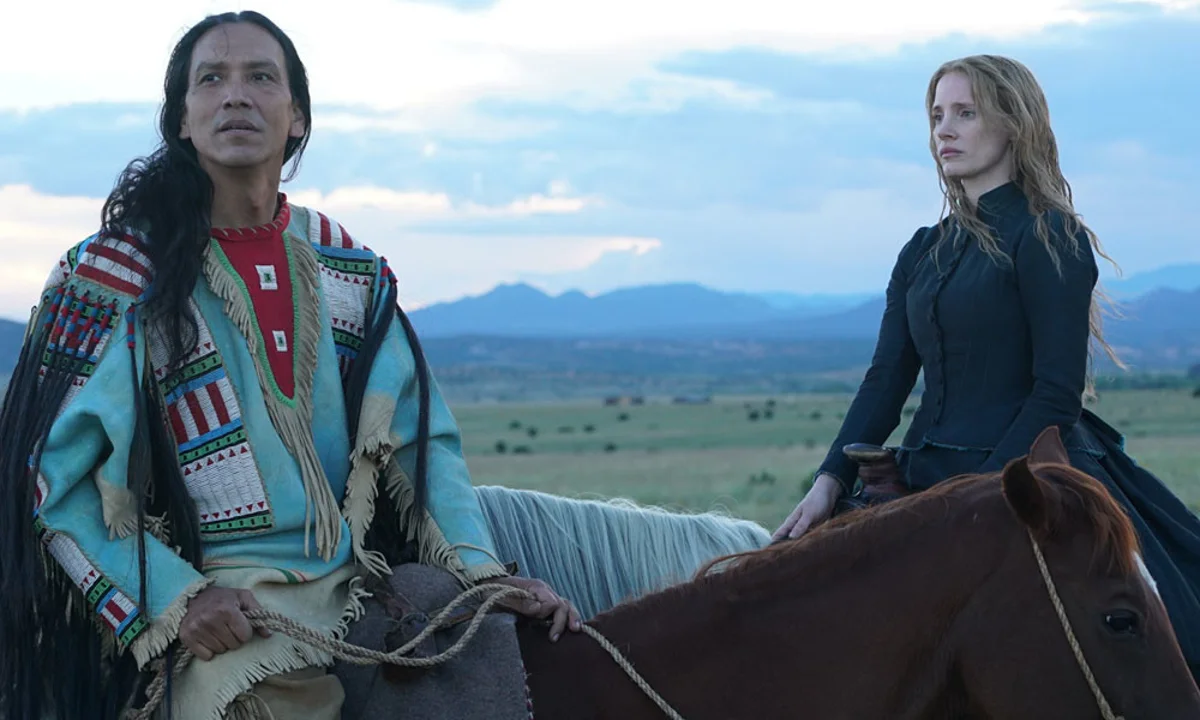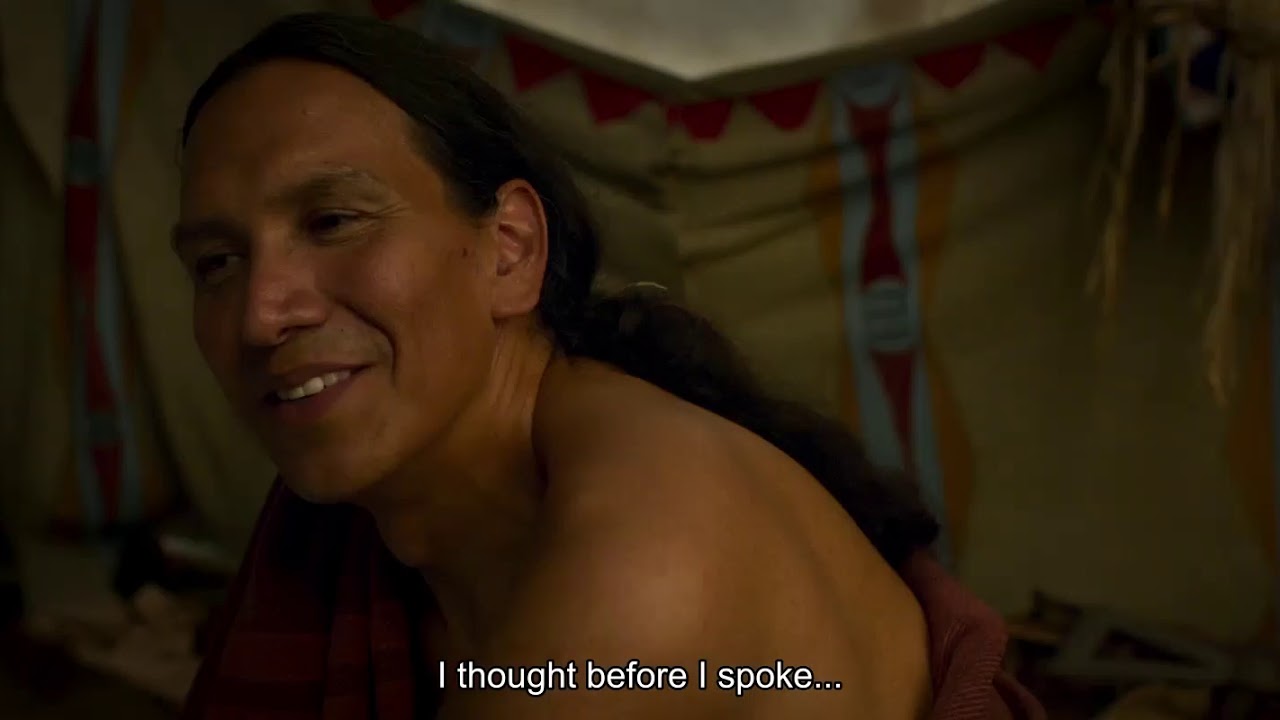🎬 Woman Walks Ahead (2017)

Woman Walks Ahead (2017) Movie Review: A Powerful Tale of Courage and Resistance
Introduction: “Woman Walks Ahead” (2017) is a historical drama that tells the poignant and emotionally charged story of Catherine Weldon, a strong-willed woman who defies the societal norms of the late 19th century to advocate for the rights of Native Americans. Directed by Susanna White and starring Jessica Chastain in a powerhouse performance, the film explores themes of activism, cultural identity, and the moral complexities of colonialism. Set against the backdrop of the American Indian resistance movement, “Woman Walks Ahead” not only sheds light on a little-known historical figure but also brings to the forefront the struggle for justice, dignity, and human rights.
The film is based on the true story of Catherine Weldon, a widowed artist from Brooklyn, who travels to the Lakota Sioux reservation in South Dakota to paint a portrait of the famed leader Sitting Bull (played by Michael Greyeyes). What follows is a compelling journey of discovery, resistance, and the difficult intersection between personal conviction and social reality. “Woman Walks Ahead” offers an intimate look into the life of an extraordinary woman who became a key ally to the Lakota people during a critical time in American history.
Plot Overview:
Set in the 1890s, “Woman Walks Ahead” follows Catherine Weldon, a progressive woman and artist living in Brooklyn, who embarks on a journey to the Lakota Sioux reservation in North Dakota to fulfill her dream of painting Sitting Bull. Initially, she is motivated by a desire to document the life of this influential Native American leader, whom she admires for his resistance against the U.S. government’s policies of assimilation and land theft.
Upon her arrival, Weldon finds herself drawn into the political turmoil facing the Lakota people, as they resist the encroachment of settlers and the systematic destruction of their way of life. Sitting Bull, a symbol of defiance and cultural pride, becomes both a subject for her art and a political ally as she witnesses firsthand the injustices being perpetrated against the Native American community.
Despite her outsider status, Weldon gradually becomes an outspoken advocate for the Lakota people, using her position and influence to speak out against the government’s attempts to break their spirit and force them into submission. However, her actions place her in direct conflict with the authorities, including the U.S. Army, and her growing involvement in the resistance movement exposes her to the full scope of the risks faced by those who dare to challenge the government’s oppressive agenda.
The film builds toward a dramatic and tragic conclusion, as Weldon’s efforts to support the Lakota people lead to a deep personal transformation and a harsh reckoning with the price of activism and the consequences of standing up to power.
Themes of Activism and Moral Courage:
At its core, “Woman Walks Ahead” is a film about the courage it takes to stand up for what is right in the face of overwhelming opposition. Catherine Weldon, a woman ahead of her time, uses her art as both a tool for resistance and a way to communicate the struggles of the Lakota people to the world. Her decision to support Sitting Bull and his people comes with significant personal sacrifice, but it also provides a compelling look at the power of individual action in the fight against injustice.
The theme of moral courage is also central to the film’s narrative. Weldon’s decision to ally herself with the Lakota people and resist the oppressive forces of the U.S. government was not without risk. The film shows how the pressures of society, gender, and race shaped the lives of those who dared to challenge the status quo. In Weldon’s case, her status as a woman in the 19th century added layers of complexity to her actions. She was not only confronting institutionalized racism and colonialism but also the gendered limitations of her own society.
The film also explores the intersection of art and activism. Weldon, as an artist, uses her skills to give a voice to those who have been silenced by history. Her portrait of Sitting Bull becomes a symbol of resistance and defiance, not just an artistic representation of a man but a testament to the ongoing struggle for Native American rights. The film highlights the power of art in creating cultural awareness and fostering solidarity in the face of oppression.
Character Development and Performances:
Jessica Chastain’s portrayal of Catherine Weldon is nothing short of extraordinary. Chastain, known for her ability to bring depth to complex characters, skillfully inhabits Weldon’s emotional journey from a woman seeking to understand the plight of Native Americans to a fierce advocate for their rights. Chastain’s performance is restrained yet powerful, capturing the internal conflict that comes with being an outsider in a foreign culture while also recognizing the moral imperative to act.
Sitting Bull, played by Michael Greyeyes, is another standout performance in the film. Greyeyes brings dignity and nuance to the role, portraying Sitting Bull not just as a warrior but as a wise and deeply principled leader who understands the gravity of the situation facing his people. His interactions with Weldon are poignant, as he navigates the complexities of an outsider seeking to help while also guarding his people’s traditions and sovereignty. The relationship between Sitting Bull and Weldon is central to the film’s emotional core, with both characters growing in their understanding of each other’s struggles and ideals.
The supporting cast, including Sam Rockwell as the U.S. Army officer tasked with overseeing the Lakota reservation, adds additional layers of tension and complexity to the narrative. Rockwell plays a character who is at odds with Weldon’s beliefs but is equally aware of the human cost of the conflict. His performance is marked by subtlety, showing the internal conflict of a man bound by duty but also aware of the morality of the situation.
Cinematography and Visual Style:
The cinematography in “Woman Walks Ahead” is stunning, with sweeping shots of the vast, open plains of the Dakotas juxtaposed against the intimate moments between the characters. The film’s visuals are rich in texture and symbolism, with nature often serving as a metaphor for the struggle and resilience of the Native American people. The contrast between the harshness of the landscape and the warmth of the human relationships creates a powerful visual narrative that complements the film’s themes of survival and resistance.
The use of color in the film is particularly noteworthy. The muted earth tones of the costumes and scenery emphasize the bleakness of the historical moment, while the occasional bursts of color, such as the vibrant hues of Sitting Bull’s ceremonial attire or the palette of Weldon’s art, bring a sense of vitality and resistance to the screen. The cinematography skillfully conveys the tension between cultural traditions and the encroaching forces of colonialism, highlighting the emotional stakes of the story.
Sound Design and Score:
The sound design in “Woman Walks Ahead” serves to immerse the audience in the period and the setting. The ambient sounds of the plains – the wind, the rustling of grass, and the distant calls of animals – create a sensory experience that pulls viewers into the harsh realities of life on the reservation. The film’s score, composed by [Composer’s Name], is understated yet evocative, with haunting melodies that echo the struggles of the characters and their deep connection to the land. The music never overpowers the narrative but instead enhances the emotional weight of the scenes, adding depth to the film’s contemplative atmosphere.
The sound design also plays a crucial role in the film’s depiction of conflict. Whether it’s the distant rumblings of the army’s encroachment or the quieter moments of tension between characters, the sound serves to heighten the stakes and reflect the internal struggles of the characters.
Pacing and Narrative Structure:
The pacing of “Woman Walks Ahead” is deliberate, with the film taking its time to establish the characters and their motivations. This slow-burn approach allows for deep emotional engagement with the story and its themes. While some may find the pacing slow, it is ultimately the film’s patience and focus on character development that makes the narrative so compelling.
The film’s structure is straightforward, following Weldon’s journey from her initial arrival at the reservation to her deepening involvement in the political struggles of the Lakota people. The linear narrative is enriched by moments of introspection, with Weldon grappling with her personal convictions, the limits of her influence, and the cost of her activism.
Conclusion:
“Woman Walks Ahead” (2017) is a remarkable historical drama that shines a light on an often-overlooked chapter in American history. With a powerful performance by Jessica Chastain, an evocative portrayal of Sitting Bull by Michael Greyeyes, and a stunning visual aesthetic, the film offers a moving and thought-provoking exploration of activism, courage, and the fight for justice. Through Catherine Weldon’s journey, the film invites audiences to reflect on the moral complexities of colonialism, the importance of cultural preservation, and the transformative power of standing up for what is right.
As an inspiring tale of a woman who walked ahead of her time, “Woman Walks Ahead” is a must-watch for those interested in films that explore themes of resistance, identity, and social change. The film’s powerful storytelling, unforgettable performances, and relevant themes make it an essential piece of cinematic history.











